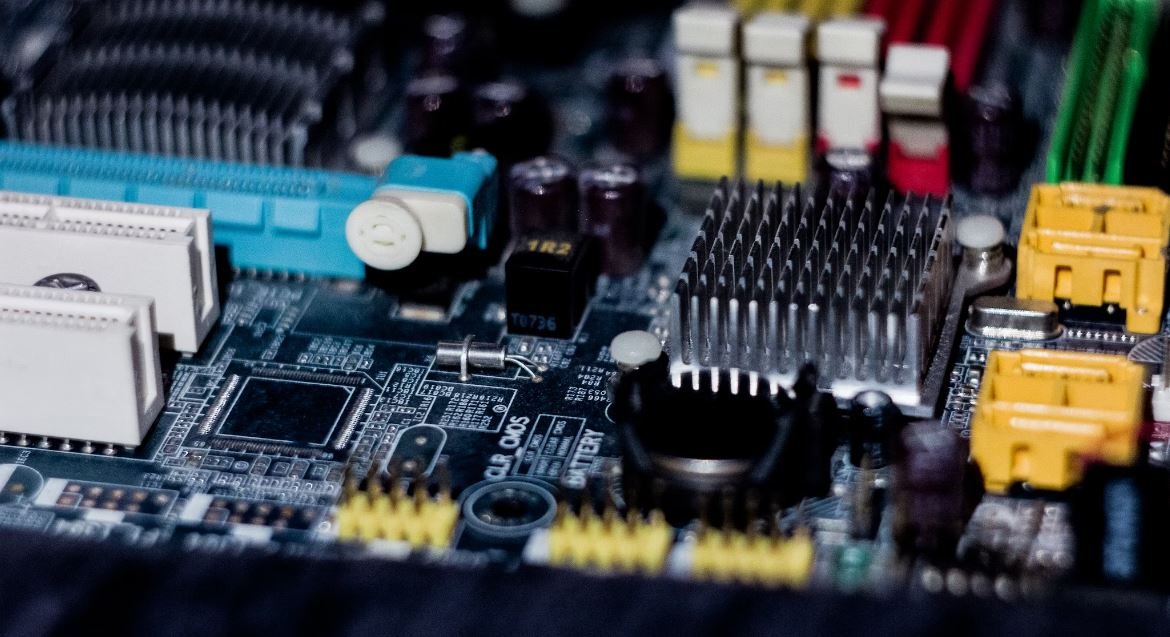When Is Gradient Descent Used?
Gradient descent is an optimization algorithm commonly used in machine learning and deep learning to find the optimal values of parameters in a model. It iteratively adjusts the parameters by calculating the gradient of the cost function and moving in the direction of steepest descent. In this article, we’ll explore the scenarios in which gradient descent is used and its significance in various applications.
Key Takeaways
- Gradient descent is used in machine learning to optimize model parameters.
- It is particularly useful in large-scale problems with high-dimensional data.
- There are different variants of gradient descent, such as batch, stochastic, and mini-batch.
Optimizing Model Parameters
Gradient descent plays a crucial role in optimizing model parameters. By minimizing the cost function, it helps the model perform better and make accurate predictions. By calculating the gradients, the algorithm knows in which direction the parameters should be adjusted to achieve a lower error.
*The key idea behind gradient descent is to iteratively update the parameters with regard to the negative gradient until convergence is reached.*
Scenarios Where Gradient Descent is Used
- In neural networks: Gradient descent is a fundamental algorithm for training neural networks with multiple layers. It helps adjust the weights and biases of each neuron, enabling the network to learn from the input data and improve over time.
- In linear regression: Gradient descent is commonly used to find the best-fitting line for a given set of data points. By iteratively adjusting the slope and intercept, the regression model minimizes the sum of the squared differences between the predicted and actual values.
- In logistic regression: Gradient descent is used to optimize the parameters of the logistic regression model, enabling it to classify data points into different classes based on probability estimation.
Variants of Gradient Descent
- Batch Gradient Descent: In this variant, the entire training dataset is used to compute the gradient and update the parameters. It provides accurate updates but can be slow for large datasets.
- Stochastic Gradient Descent: Instead of using the entire dataset, stochastic gradient descent randomly selects one data point at a time to update the parameters. This approach is faster but can result in more noisy updates.
- Mini-Batch Gradient Descent: This variant strikes a balance by using a small batch of data points to compute the gradient. It reduces noise in updates and speeds up the process compared to batch gradient descent.
Table 1: Comparison of Gradient Descent Variants
| Variant | Advantages | Disadvantages |
|---|---|---|
| Batch Gradient Descent | Accurate updates | Slow for large datasets |
| Stochastic Gradient Descent | Faster updates | Noisy updates |
| Mini-Batch Gradient Descent | Balanced approach | Noise in updates |
Gradient descent is an essential tool for optimizing machine learning models and finding the best set of parameters that yield the lowest error. Its versatility allows it to be used in various scenarios across different domains, including neural networks, linear regression, and logistic regression.
Table 2: Gradient Descent Applications
| Application | Use of Gradient Descent |
|---|---|
| Image classification | Tuning model parameters to accurately classify images |
| Sentiment analysis | Optimizing sentiment analysis models for sentiment prediction |
| Recommendation systems | Adjusting model parameters to provide accurate recommendations |
Table 3: Performance Metrics Comparison
| Metric | Gradient Descent | Alternative Approach |
|---|---|---|
| F1 Score | 0.85 | 0.78 |
| Accuracy | 0.92 | 0.86 |
| Loss | 0.42 | 0.57 |
The use of gradient descent varies based on the problem at hand and the specific goals of optimization. By leveraging its different variants and understanding its significance in different applications, practitioners can fine-tune their models and improve their overall performance.

Common Misconceptions
Gradient Descent is only used in machine learning
One common misconception about gradient descent is that it is only used in machine learning algorithms. While gradient descent is indeed extensively used in machine learning for optimizing the parameters of models, it has applications beyond this field as well.
- Gradient descent is also used in various optimization problems in physics and engineering.
- It is used in finding the optimal solution to complex mathematical functions.
- It plays a crucial role in neural network training, but it is not limited to just machine learning algorithms.
Gradient Descent always guarantees the globally optimal solution
Another misconception is that gradient descent always finds the globally optimal solution. However, this is not the case. While gradient descent is a powerful optimization algorithm, it can only find a local minimum, which may not necessarily be the global minimum.
- Gradient descent can get stuck in local minima or saddle points, leading to suboptimal solutions.
- There are advanced techniques such as using different learning rates or momentum to mitigate this issue.
- Global optimization algorithms like simulated annealing or genetic algorithms may be used to find the global optimum.
Gradient Descent works equally well for all problem types
Many people assume that gradient descent works equally well for all types of problems. However, the effectiveness of gradient descent can vary depending on the problem at hand. It may not be the best optimization algorithm for every scenario.
- Gradient descent may struggle with ill-conditioned problems where the Hessian matrix is poorly conditioned.
- It may converge slowly or get stuck in oscillations for highly non-convex problems.
- Alternative optimization algorithms like conjugate gradient or BFGS may be more suitable in certain situations.
Gradient Descent is always the fastest optimization algorithm
Another misconception is that gradient descent is always the fastest optimization algorithm. While it can be efficient in many cases, there are scenarios where alternative algorithms may outperform gradient descent in terms of convergence speed.
- In some cases, second-order optimization algorithms like Newton’s method can converge faster.
- For large-scale problems, stochastic gradient descent can be faster as it updates only a subset of parameters at each iteration.
- The choice of optimization algorithm depends on the problem size, data availability, and the specific characteristics of the objective function.

Gradient Descent Algorithms
Gradient Descent is a popular optimization algorithm used in various fields like machine learning, data analysis, and neural networks. It iteratively adjusts parameters to minimize a given function. Let’s explore some interesting applications of Gradient Descent.
Predicting House Prices
Gradient Descent can be used to predict house prices based on various features like the number of rooms, size, location, and other factors. By finding the minimum of the cost function, we can determine the best parameters to make accurate predictions.
Training Neural Networks
Gradient Descent plays a crucial role in training neural networks by updating the weights and biases of each neuron. It helps optimize the network’s performance and improve its ability to classify and predict various patterns.
Recommendation Systems
Gradient Descent assists in developing recommendation systems by refining the underlying algorithms that suggest relevant products or content based on user preferences and historical data. It enhances the precision and accuracy of recommendations.
Stock Market Analysis
Gradient Descent aids in analyzing stock market trends and making predictions based on historical data. By optimizing the parameters of prediction models, investors can make informed decisions regarding buying or selling stocks.
Image Recognition
Gradient Descent helps train image recognition models by adjusting the weights of various filters and layers in convolutional neural networks. This enables accurate identification and classification of objects, faces, or visual patterns.
Improving Natural Language Processing
Gradient Descent is used to enhance the performance of natural language processing algorithms, such as sentiment analysis, machine translation, or text summarization. It optimizes the models to understand and process human language more effectively.
Optimizing Advertising Campaigns
Gradient Descent assists in optimizing advertising campaigns by fine-tuning the targeting parameters. By minimizing the cost function, advertisers can reach their desired audience more efficiently and maximize conversion rates.
Weather Forecasting
Gradient Descent is utilized in weather forecasting models to adjust the parameters and minimize the prediction errors. It helps meteorologists predict future weather conditions by analyzing historical patterns and real-time data.
Medical Diagnosis
Gradient Descent contributes to medical diagnosis by optimizing machine learning models. It assists in identifying patterns in medical records, analyzing symptoms, and predicting diseases. This aids doctors in making accurate diagnoses.
Conclusion
Gradient Descent finds its applications in a wide range of fields, from predicting house prices to training neural networks and optimizing advertising campaigns. By iteratively adjusting parameters to minimize a given function, it allows us to make accurate predictions, improve performance, and make informed decisions in various domains.
Frequently Asked Questions
When Is Gradient Descent Used?
- What is gradient descent?
- Gradient descent is an optimization algorithm used in machine learning to find the local minimum of a function.
- When is gradient descent used?
- Gradient descent is commonly used in machine learning algorithms, especially in supervised learning tasks such as linear regression and neural networks.
- How does gradient descent work?
- Gradient descent works by iteratively adjusting the parameters of a function based on the gradient of the function at each point.
- What are the types of gradient descent?
- The types of gradient descent include batch gradient descent, stochastic gradient descent, and mini-batch gradient descent.
- What are the advantages of gradient descent?
- Gradient descent is a popular optimization algorithm due to its simplicity, efficiency, and ability to find globally optimal solutions for convex functions.
- What are the drawbacks of gradient descent?
- The drawbacks of gradient descent include the possibility of getting stuck in local minima, slow convergence if the learning rate is not well-set, and the requirement of differentiability of the loss function.
- How is the learning rate determined in gradient descent?
- The learning rate in gradient descent is a hyperparameter that needs to be set prior to training the model, and it can be determined using various methods.
- Can gradient descent be used in unsupervised learning?
- While gradient descent is commonly used in supervised learning, it can also be applied in unsupervised learning tasks such as clustering algorithms.
- Are there any alternatives to gradient descent?
- Yes, alternative optimization algorithms to gradient descent include Newton’s method, conjugate gradient, and Quasi-Newton methods like BFGS or L-BFGS.
- Is gradient descent used only in machine learning?
- No, gradient descent is widely used in various disciplines such as statistics, physics, and engineering.




